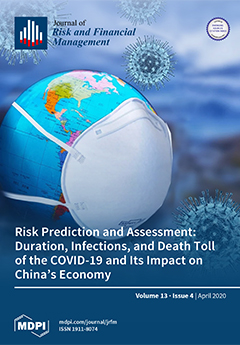Open AccessArticle
The Costs and Benefits of Bank Capital—A Review of the Literature
by
Martin Birn, Olivier de Bandt, Simon Firestone, Matías Gutiérrez Girault, Diana Hancock, Tord Krogh, Hitoshi Mio, Donald P. Morgan, Ajay Palvia, Valerio Scalone, Michael Straughan, Arzu Uluc, Alexander H. von Hafften and Missaka Warusawitharana
Cited by 16 | Viewed by 6505
Abstract
In 2010, the Basel Committee on Banking Supervision published an assessment of the long-term economic impact (LEI) of stronger capital and liquidity requirements. This paper considers this assessment in light of estimates from later studies of the macroeconomic benefits and costs of higher
[...] Read more.
In 2010, the Basel Committee on Banking Supervision published an assessment of the long-term economic impact (LEI) of stronger capital and liquidity requirements. This paper considers this assessment in light of estimates from later studies of the macroeconomic benefits and costs of higher capital requirements. Consistent with the Basel Committee’s original assessment, this paper finds that the net macroeconomic benefits of capital requirements are positive over a wide range of capital levels. Under certain assumptions, the literature finds that the net benefits of higher capital requirements may have been understated in the original committee assessment. Put differently, the range of estimates for the theoretically optimal level of capital requirements—where marginal benefits equal marginal costs—is likely either similar to, or higher than was originally estimated by the Basel Committee. The above conclusion is however subject to a number of important considerations. First, estimates of optimal capital are sensitive to a number of assumptions and design choices. For example, the literature differs in judgments made about the permanence of crisis effects as well as assumptions about the efficacy of post crisis reforms, such as liquidity regulations and bank resolution regimes, in reducing the probability and costs of future banking crisis. In some cases, these judgements can offset the upward tendency in the range of optimal capital. Second, differences in (net) benefit estimates can reflect different conditioning assumptions such as starting levels of capital or default thresholds (the capital ratio at which firms are assumed to fail) when estimating the impact of capital in reducing crisis probabilities. Finally, the estimates are based on capital ratios that are measured in different units. For example, some studies provide optimal capital estimates in risk-weighted ratios, others in leverage ratios. And, across the risk-weighted ratio estimates, the definition of capital and risk-weighted assets (RWAs) can also differ (e.g., tangible common equity (TCE) or Tier 1 or common equity tier 1 (CET1) capital; Basel II RWAs vs. Basel III measures of RWAs). A full standardisation of the different estimates across studies to allow for all of these considerations is not possible on the basis of the information available and lies beyond the scope of this paper. This paper also suggests a set of issues which warrant further monitoring and research. This includes the link between capital and the cost and probability of crises, accounting for the effects of liquidity regulations, resolution regimes and counter-cyclical capital buffers, and the impact of regulation on loan quantities.
Full article
►▼
Show Figures




